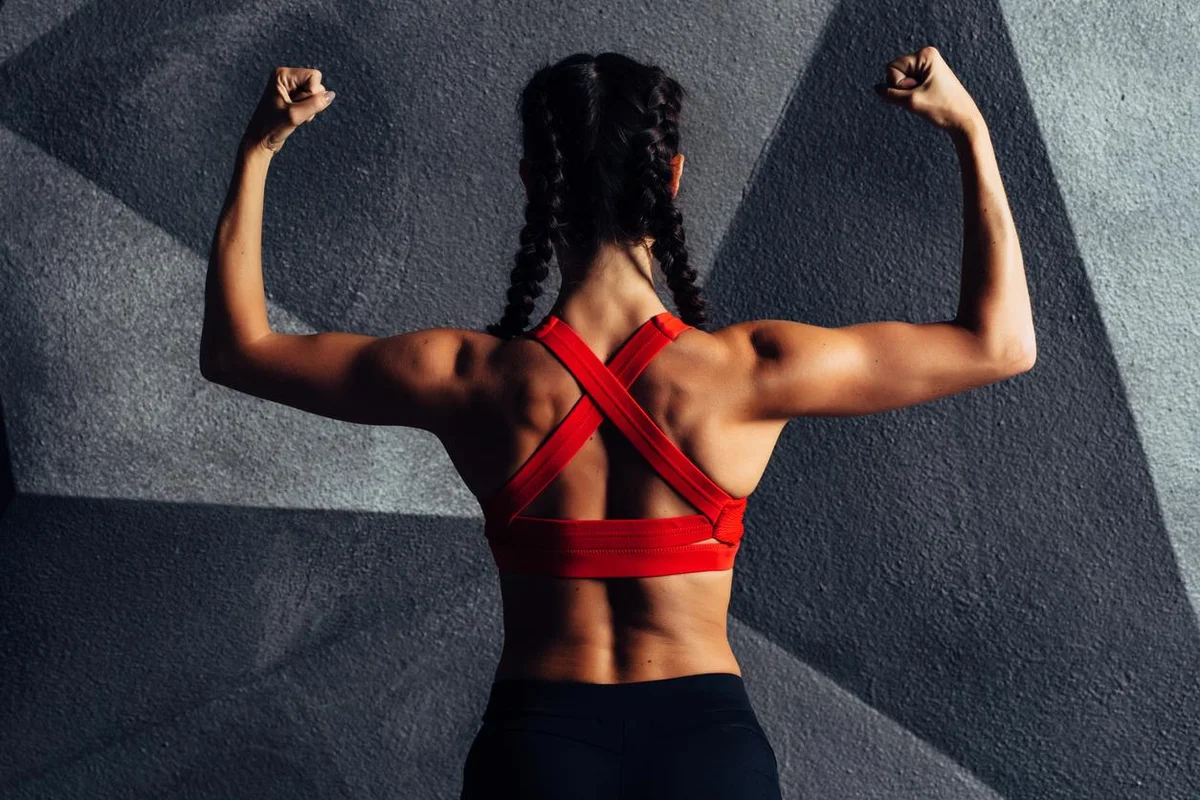
iStock.com/undrey
How to Get a Strong, Sexy Back
Getting your back in shape now can payoff big later
Sep 14, 2009
Aug 11, 2022
Your Wellness

Learn about our editorial policies

You know the experience: Standing in front of a full-length mirror, you appraise your body and decide what area you need to work on. Maybe it's those side bulges where your thighs meet your torso or a post-baby tummy that has lasted too long or gravity-challenged upper arms.
Many of us are overly critical of what we see in the mirror and ignore what we can't see easily—our backs. Yet exercising the back may be far more important to our overall good health, now and for years to come.
"People think about things first from an aesthetic standpoint," says Rebecca Seguin, PhD, CSCS, an exercise physiologist and strength-training expert based at the Fred Hutchinson Cancer Research Center in Seattle. "In the gym, you see them doing squats and lunges, paying so much attention to the lower body. Many people don't pay attention to the back until they're injured."
Such injury often comes not from accidents, but everyday activities. If you sit for hours in front of an electronic screen at work or home, lift heavy objects (such as patients or goods) or stand in one place for a long time, you may end up with an injured back and the resulting pain. Indeed, when it comes to injuries that cause lost time at work, the back leads all other body areas as the source of problems.
"We spend so much time sitting, with our backs supported," Dr. Seguin says. "Our daily lives have not only contributed to obesity, but to a lack of strength in functioning."
Build muscles and bone
Despite modern life, back pain isn't inevitable. Most injuries can be avoided, or pain relieved, by doing exercises to strengthen both the muscles and bones in your back.
Key muscles contributing to a healthy back include those that pull your back forward, extend it downward and lift it upright. When you help those muscles become stronger and more flexible, you support the spine and protect your back from harm. By doing simple back exercises (see examples below) a few times a week, muscles will readily grow stronger.
Bone strength in the spine may be built by lifting light weights at safe levels. Healthy women with good muscle strength can lift five-pound weights or more, depending upon their experience, says Mehrsheed Sinaki, MD, MS, professor of physical medicine and rehabilitation and a back exercise researcher at the Mayo Clinic in Rochester, Minnesota.
Women who are osteopenic (having early signs of bone loss), should use lower weights, from 2 to 5 lbs., Dr. Sinaki says. Those with osteoporosis can build bone strength by starting with 1-lb. weights or by doing exercises that use no weight and then gradually increasing over time.
In addition, according to exercise physiologist Dr. Seguin, "Having stronger muscles that help reduce back injury also is also beneficial for bone health." So when you make those muscles stronger, you help the bones in your spine as well.
With both strong bones and muscles in your back, your posture improves. You look better, move better and feel better. Back exercise also protects your spine from compression caused by softening bone (a common reason for losing height) and devastating fractures-both of which can occur with age.
Now is the best time
It's never too early or too late to build a better back, although the sooner you start, the better.
"Back strengthening is important for younger women," Dr. Sinaki says. "For those who have good diets, back exercise would prevent them from having future problems." A woman's 20s and 30s are the best time for building bone and muscle. After 40, healthy, active women can do strenuous exercise if their bone density is good, she says.
If you haven't been active or are older, Dr. Sinaki strongly urges having a bone-density test before starting back exercises.
Go slowly when you begin, but being in your 50s, 60s or beyond shouldn't stop you. Dr. Sinaki's research shows that back-strengthening exercises can have a long-term protective effect, even for older women. In one study, she and her colleagues put a group of postmenopausal women (ages 58 to 75) through a two-year course of back exercises.
Eight years after the course ended, the back exercisers had suffered only half as many fractures in the vertebral bones of their spines as did women in a control group. Although all of the women had similar bone density at the start of the course as well as after two years, when they were measured 10 years after the research had begun, the exercisers had significantly better bone density.
Getting started
You don't need to schedule a lot of time for the simple back exercises described below. They can be done at home or in a quiet office space on an exercise mat.
"Even if women took just five or 10 minutes a day and did "plank" or postural exercises, like the 'Superman' [see exercise #1], it would help," Dr. Seguin says. "I think it's really important, particularly for people in sedentary jobs."
If you have been inactive, have back pain or injury, have osteoporosis or osteopenia or have any other medical concern, talk with your health care provider before starting these exercises. Stop any exercise if you feel tired or uncomfortable or experience pain.
Back Exercise #1: Opposite Arm/Leg Lift ("Superman" exercise)
Back Exercise #2: Plank (you may recognize this from yoga or Pilates class)
Back Exercise #3: Opposites on Ball ("Bird dog" exercise using ball)